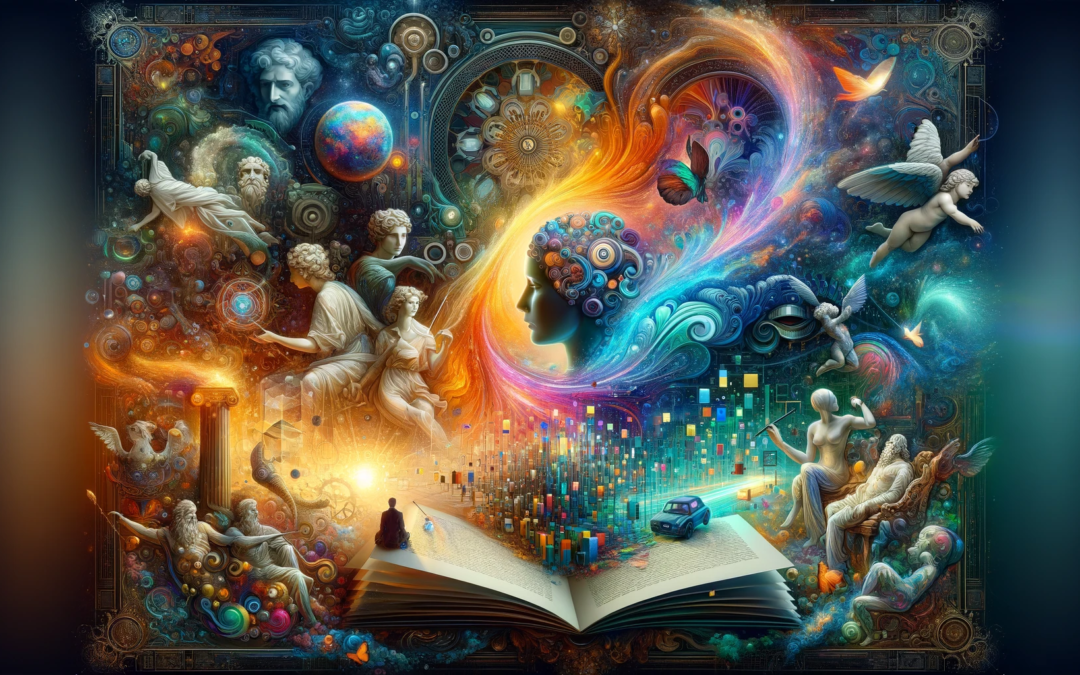Welcome to the digital era, where technology is not only transforming the way we live and work but also redefining the very essence of creativity. One such transformative influence is artificial intelligence (AI), which has found its way into the realms of art and design, challenging traditional boundaries and opening new avenues for innovation.
AI in Artistic Creation
Art has always been a reflection of human imagination and emotion, but now, AI is joining the creative conversation. Artists are leveraging the power of AI algorithms to generate stunning visual art, compose music that resonates with the soul, and even write literature that captivates readers.
One notable example is the AI-generated artwork “Portrait of Edmond de Belamy,” which was sold at auction for a staggering $432,500. This groundbreaking piece sparked a heated debate within the art community, questioning the role of AI in the creative process and the value of AI-generated art.
AI in Design Innovation
Design fields, too, are experiencing a revolution thanks to AI-driven innovation. Graphic designers are harnessing the capabilities of AI algorithms to create striking visuals and unique design aesthetics. Fashion designers are using AI to generate new patterns and explore uncharted territories of style. Architects and product designers are collaborating with AI algorithms to push the boundaries of form and function.
One fascinating example is the AI-driven design of the Beijing Daxing International Airport, which showcases the fusion of artistry and functionality. The airport’s unique shape, inspired by the natural world, was optimized using AI algorithms to create an efficient and visually stunning architectural masterpiece.
AI as a Collaborative Partner
Contrary to popular belief, AI is not here to replace human creativity but to enhance it. AI is becoming a collaborative partner for artists and designers, offering a fresh perspective and augmenting human ingenuity. By leveraging AI’s ability to process vast amounts of data and generate insights, creatives are able to explore new possibilities and push the boundaries of their craft.
AI collaboration in the creative process is not without its challenges. Some artists and designers fear that their work may become diluted or lose its human touch. However, many embrace the opportunity to collaborate with AI, recognizing that it can bring new dimensions to their creations and spark unexpected inspiration.
Ethical and Intellectual Property Considerations
As AI becomes more involved in the creative process, ethical questions and intellectual property challenges arise. Who owns the rights to AI-generated art? Can an AI algorithm truly be considered the author? These questions have sparked intense debates within the creative community, with varying viewpoints and perspectives.
Additionally, the notion of originality is being redefined. AI algorithms can analyze vast amounts of existing art and design, leading to concerns about the authenticity and uniqueness of AI-generated creations. However, some argue that AI itself is a tool, and it is ultimately the human artist or designer who imbues the work with meaning and originality.
The Future of AI in Creative Industries
Looking ahead, the potential of AI in art and design seems boundless. As AI algorithms continue to evolve and become more sophisticated, they will undoubtedly further transform these creative fields. But what will this mean for the nature of creativity and artistic expression?
Will AI become a co-creator, blurring the line between human and machine? Or will it remain a tool in the hands of artists and designers, amplifying their creative potential? These questions invite us to ponder the future of creativity in the age of advanced AI and the impact it will have on the art and design landscape.
Engaging with the Audience
We would love to hear your thoughts and experiences with AI in art and design. Do you see AI as a threat or an opportunity? What are the potential benefits, challenges, and implications of integrating AI into creative practices? Join the conversation and share your insights!
Conclusion
The marriage of art, design, and AI is reshaping the creative landscape, challenging traditional notions of creativity, and opening up exciting new possibilities. As we navigate the age of AI, it is important to embrace a balanced perspective—one that recognizes both the opportunities and challenges presented by AI in creative industries. By doing so, we can harness the full potential of AI to redefine creativity and shape a future where human ingenuity and AI collaboration thrive.










